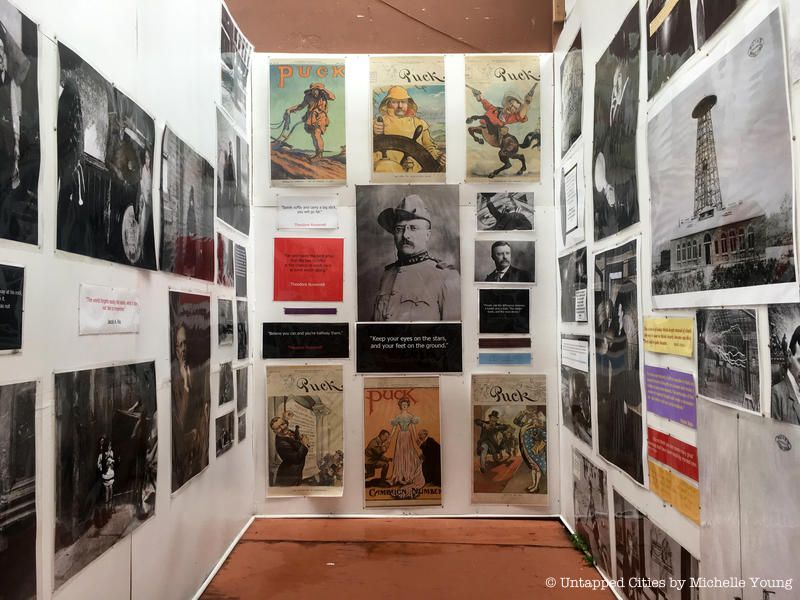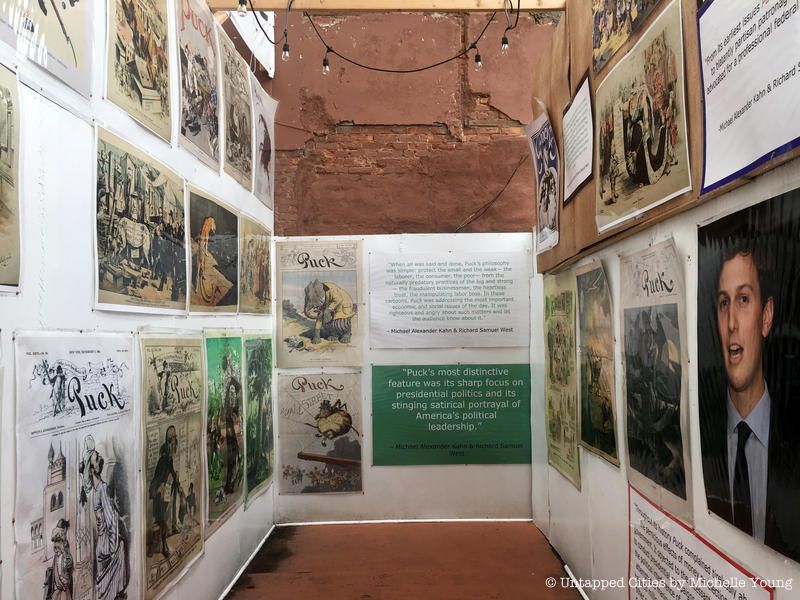Last-Minute NYC Holiday Gift Guide 🎁
We’ve created a holiday gift guide with presents for the intrepid New Yorker that should arrive just in time—


We love finding quirky pop-up exhibits in New York City, and we were recently excited to discover one in an empty lot at 49 East Houston Street! The exhibit, created by Steve Stollman, is small but honors something big—people who have shown bravery in challenging some of the most pressing social and political issues of their times. The exhibit will be there until September 15, honoring the “Mulberry Street Gang” consisting of Jacob Riis, Teddy Roosevelt, Nikola Tesla, Mark Twain, and Joseph Keppler (founder of the barrier-breaking, satirical Puck magazine).
These individuals, some of whom knew each other, all worked in the neighborhood at some point and are united by their dedication to social improvement. By displaying the courage it took for “The Mulberry Street Gang” to challenge New York City’s political and social issues in their bold, unapologetic ways, the exhibit aims to inspire visitors to similarly unite and take action on today’s most pressing injustices.
The lot that’s home to The Mulberry Street Gang is on sale as a 14-story development site, and the exhibit makes creative and efficient use of the space, which is covered in cartoons, posters, clippings, photos, caricatures, and old magazine covers. Stollman himself once owned the Houston Street lot and ran a business from there, but sold the property in 2008, hoping to return to the ground floor after construction. However, things didn’t work out, and he now has an offer requiring him to find a new buyer by September 15.

All of the people featured in the exhibit had connections to New York City and stood up to social and political injustice. For instance, Nicola Tesla (friends with Mark Twain) had a lab on Houston Street, Puck magazine was published in the adjacent Puck building, Teddy Roosevelt was once police commissioner in the neighborhood, and of course, Jacob Riis contributed to New York City with his photography.

The exhibit heavily features the work of Puck magazine—and for good reason. With its cartoons, caricatures, and satire of all kinds, Puck magazine was not only outrageously funny, but tremendously influential. From 1877-1917, it compelled corrupt, Gilded Age politicians of the time to focus on important issues affecting people everyday and influenced the future of social and political satire, seen today in other humor publications and comedians like Stephen Colbert.
As you might have guessed, the magazine was named after the conniving Shakespearean character “Puck” from A Midsummer’s Night Dream, with the magazine’s masthead reading Puck’s famous saying,”What fools these mortals be!”


A regular 32-page issue of the magazine consisted of a front-cover colored political cartoon and a back-cover non-political cartoon or comic strip. Each issue had a double-page colored centerfold (usually one about politics), as well as several black and white ones illustrating funny stories, a page of editorials about current issues, and illustrated ads.

The magazine itself was barrier-breaking, as the first magazine with illustrated advertising and the first weekly publication to successfully have full-color lithography printing. Accordingly, it has an enduring legacy that continues today. Its masthead is now mirrored in the ironic “What, Me Worry?” of MAD magazine, published 75 years later and founded one block away from Puck’s headquarters. Puck magazine’s legacy also lives on in the satirical REALIST journal, which many consider the “Underground Press” of the 1960s-70s.
The exhibit also includes todays’ best political cartoons, showing that as issues become more serious, we will need to find a perspective that lets us see humor, absurdity, and universality in our present conditions, thus making it easier to address these issues going forward.
The Mulberry Street Gang also honors the bravery it took for Nikola Tesla to challenge Thomas Edison, Jacob Riis to stand up to gangsters through his journalism, Mark Twain to challenge racists and imperialists through his thoughts and writing, and Roosevelt to never back down from politicians who opposed him. All of this was done for the sake of social improvement, reflected in Puck’s cartoons, Twain’s monologues, Roosevelt’s National Park System, Tesla’s inventions, and Riis’ photography. Despite their different talents, works, and flaws, the exhibit highlights common threads: creativity, drive, ambition, and dedication to social betterment.

Stollman hopes that by featuring the great photos and journalism of, and produced by, these individuals, visitors see the importance of present reality. He want it to serve as a reminder to always search for the truth in the face of adversity, following in the footsteps of the Mulberry Street Gang.
Next, read about the redwood tree on Houston Street and The Top Ten Places to Find Nikola Tesla in NYC.
Subscribe to our newsletter